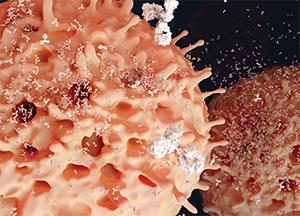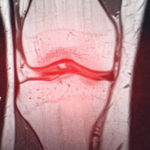
Plasma cells segregating antibodies.
Juan Gaertner/shutterstock.com
The findings were presented at the Annual Congress of the European League Against Rheumatism (EULAR) 2016 by researchers at Leiden University Medical Center and Groene Hart Hospital, both in The Netherlands. They were part of a session highlighting the growing interest in the role that plasma cells can play in the tenacity of RA, acting as a kind of disease engine that finds safe harbors in the body and can be difficult to combat.
The work from the researchers in The Netherlands was an attempt to dig deeper into the understanding of ACPA antibodies, a marquee feature of RA. Research shows these antibodies seem to be actively involved in instigating or worsening or perpetuating the disease, or even all three.
“Despite all this knowledge, we actually know very little about the cells that make these antibodies,” said Hans Ulrich Scherer, MD, PhD, a researcher at Leiden. “Knowledge about these cells might be very relevant.”
The Research
To study how cells from the synovial compartment affect the longevity of B cell responses that produce ACPA, researchers collected mononuclear cells from synovial fluid and from peripheral blood in patients with established RA. They used the ELISPOT assay to detect cells that were spontaneously secreting ACPA-immunoglobulin G (IgG). Then the mononuclear cells from both sources were cultured, using no additional stimuli, to assess the degree of spontaneous ACPA-IgG secretion.
The results were striking. The synovial fluid mononuclear cells showed up to a 200-fold increase of ACPA-IgG secretion compared to that in peripheral blood, even though the number of B cells was lower in the synovial fluid.
Researchers found that a median of 12%—but up to 50%—of all IgG-secreting cells in synovial fluid were ACPA-IgG-secreting.
Plus, this spontaneous ACPA-IgG secretion was, as they put it, “remarkably stable” in the synovial fluid cultures, detectable for several months, as opposed to only a few weeks in peripheral blood, they found.
“We consistently saw this prolonged period of ACPA-IgG production in the synovial fluid culture, where in the PBC [peripheral blood cultures], this died out rather rapidly,” Dr. Scherer said.

